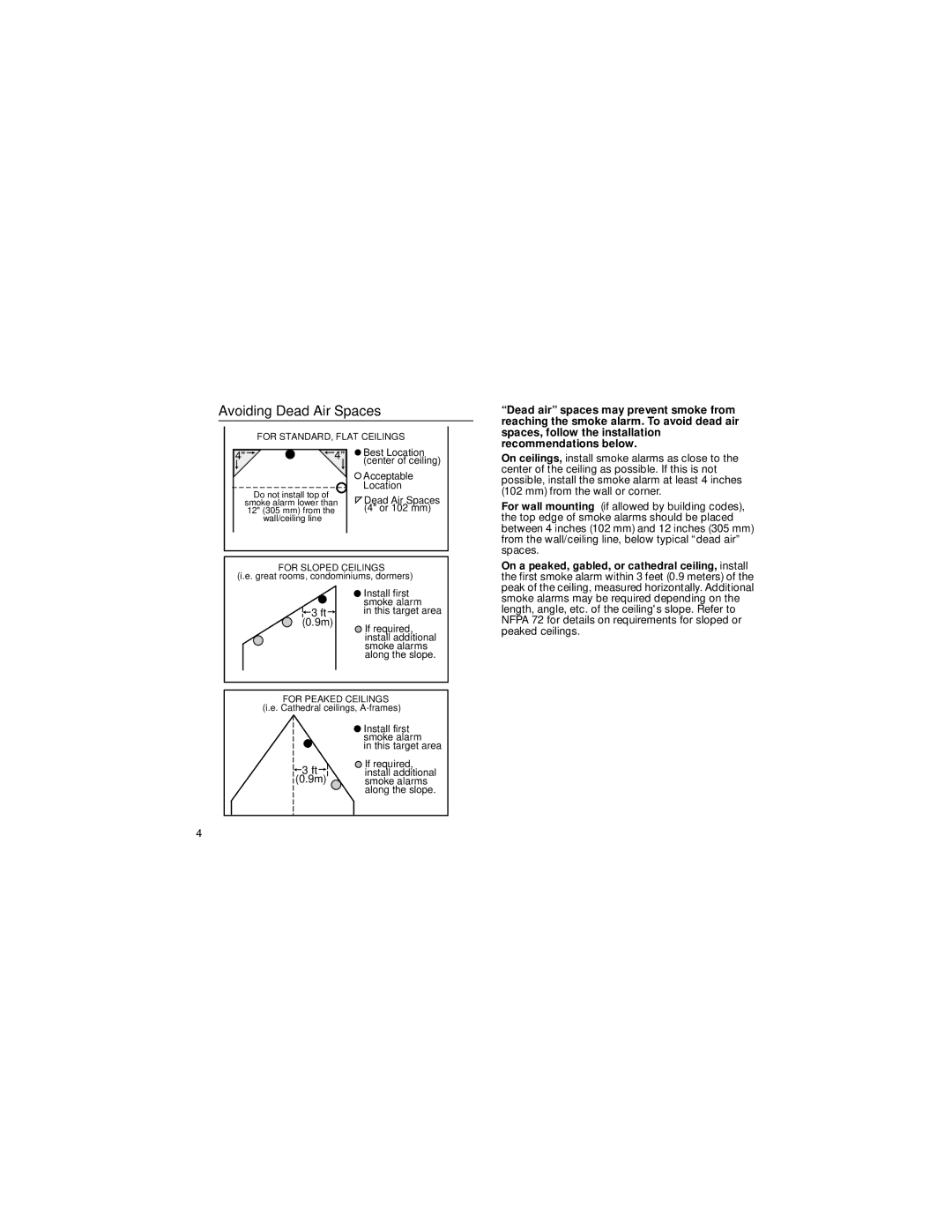4120B, M06-2016-007 specifications
The BRK electronic M06-2016-007,4120B is a cutting-edge detection device designed for modern safety needs. This model exemplifies BRK's commitment to innovation, reliability, and user-friendly functionality. The M06-2016-007,4120B is primarily a smoke and carbon monoxide detector, ensuring comprehensive protection against two of the most prevalent household hazards.One of the standout features of this model is its advanced photoelectric sensing technology. Unlike traditional ionization smoke detectors that rely on radioactive materials, the photoelectric sensor uses light beams to detect smoke particles effectively. This technology is particularly adept at identifying smoldering fires, which can produce higher amounts of smoke before bursting into flames, ultimately leading to quicker alerts for homeowners.
In addition to its smoke detection capabilities, the M06-2016-007,4120B efficiently monitors carbon monoxide levels. Carbon monoxide is a colorless, odorless gas that can be deadly in high concentrations. The detector continuously samples the air and provides real-time readings to alert occupants when levels become dangerous. This dual functionality makes the M06-2016-007,4120B a two-in-one safety device, underscoring its versatility.
The alarm system of the M06-2016-007,4120B is robust and designed for maximum audibility, ensuring that even in the sleep state, alerts can be heard. It features a loud siren that meets industry standards, providing reassurance that occupants will be warned in the event of an emergency.
Powering the device is a reliable battery backup that ensures continued operation even in power outages, making it a dependable choice for safety-conscious consumers. Furthermore, the device incorporates a low-battery alert feature to remind users when it's time to replace the batteries, enhancing ongoing reliability.
Moreover, the M06-2016-007,4120B boasts an easy installation process, allowing homeowners to set it up without the need for professional assistance. The compact design ensures it can fit seamlessly into various home environments without being intrusive.
In conclusion, the BRK electronic M06-2016-007,4120B is a highly effective smoke and carbon monoxide detector that combines advanced technology with practical safety features. Its photoelectric sensing, dual detection capabilities, and reliable power backup position it as a must-have for any household looking to enhance its safety measures.

